This site is about much more than inductors but if you came looking for info on inductive kickback or inductors in general, this light crash course should make it clear in no time using a few random anthropomorphizations I’ve found useful.
Inductors: the grumpy old man of passive components
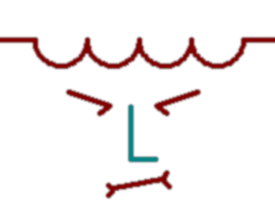
Inductors stay on top of current events but feel that no news is good news… they like things nice and steady, for everything to keep going along just as it did before.
That is to say that once a level of current flow is set, they’re happy to all but disappear from the scene and let things proceed as if they weren’t even there.
Once some steady current is flowing through it, an inductor has pretty much no effect on the circuit and you can imagine it’s gone except for its magnetic personality (a steady magnetic field). That field was built-up long ago, back when current started flowing. It doesn’t have any influence on the current in the circuit but it can be used for neat things like activating relays, opening locks or whatever.
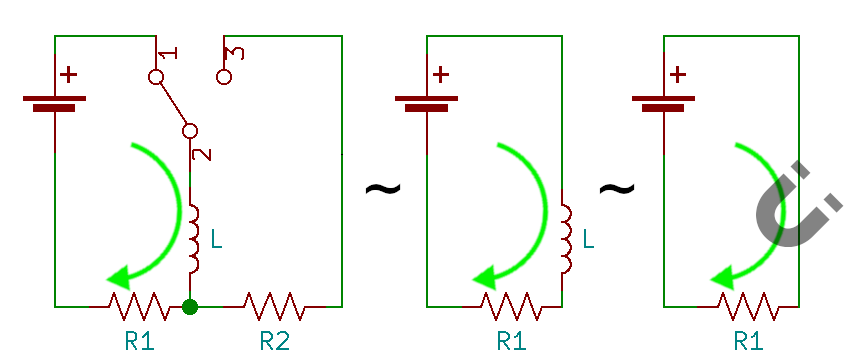
If we quickly toggle the switch in the circuit above, things suddenly change in a big way: the battery that was supplying that steady current is gone, and this abrupt change leaves the inductor very dissatisfied.
Maybe agent Smith would be a better metaphor than “grumpy old man”, because this component now leaps into action and does everything in its power to maintain the status quo (keep the current flow going just as it was).
Here, the inductor actually has little problem doing this.
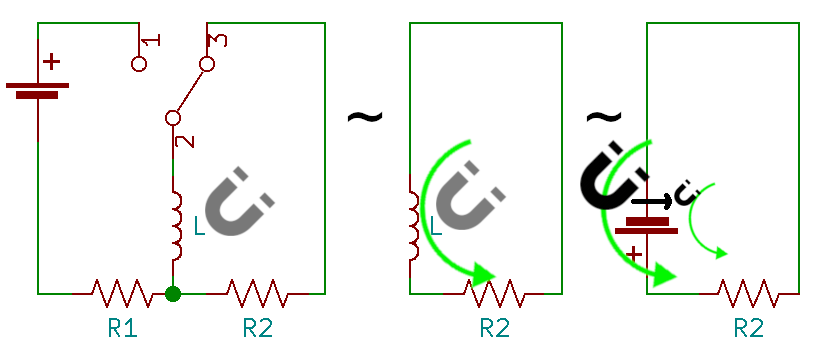
All the energy that was stashed in the magnetic field way back when is taken out of storage and converted into a force that propels electrons down the wire. The inductor is taking the place of the now missing battery, driving current.
That inductor can’t keep this up forever and, as its field is used up (collapses), the amount of push available shrinks and the current slowly reduces to zero. Not a perfect solution, from the grumpy inductor’s perspective, but still a nice easy slope of change rather than the sudden transition it abhores.
You can see this in action: play with a cool simulation of this circuit here. The applet lets you toggle the switch, set component values and see the voltage and current evolve in the circuit.
Inductive Kickback
So inductors are like little magnets when things are steady but make their presence known–participate in slowing or generating current–when the situation is dynamic.
In the first example, when we flip the switch the inductor has an easy alternate path to push electrons through and keep things moving. What about cases where there isn’t such a second option already setup?
Here’s the situation: current is flowing steadily and then I press a switch to open it up and break the circuit. The sudden change in current makes the inductor unhappy but there’s little to do about it… or is there?
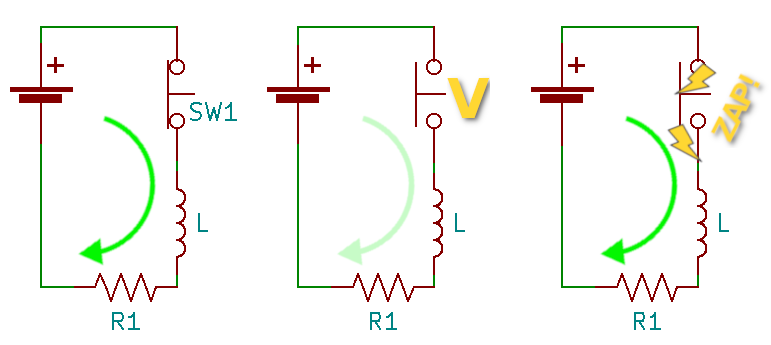
A potential difference (voltage) is quickly built up by the inductor, who’s desperately trying to keep things moving… this voltage goes up and up (and up!) until finally the resistance of the air gap itself is no longer enough to keep electrons from flowing. We’ve created a spark plug… zap! a short light show ensues and the current flow is momentarily restored through the tiny lightning in the air.
Some button switches may be designed to handle this but if your switch is electronic (say a transistor or mosfet) then voltage high enough to force it to conduct will probably be the end of it. Sadness.
Solution
It’s easy enough to avoid all these sparks by providing a pathway for current, one that is only available when the switch is open and the inductor actually needs it: a flyback diode.
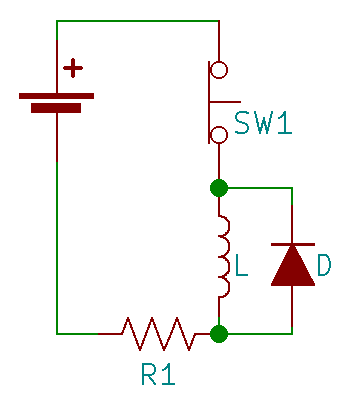
When the switch is closed the diode is reverse biased and looks pretty much like it’s not even there. When you open that switch and stop the normal current flow, the inductor’s efforts are quickly rewarded–a second path for current opens up, and electrons happily woosh through the tight loop formed by the diode and inductor.
The selection for the flyback diode isn’t super critical, you mainly need to have something that can handle the short spikes in current.
If it’s just there to allow for this path, then a regular old 1n400x is usually good enough. If speed is critical–either you’re switching on/off quickly or you want things to stabilize fast–then some schottky diode might be preferable. A resistor in the loop will slow things down but can aid in dissipating energy.
The major lessons are that:
- inductors like current flow to stay steady, and work hard to keep it that way;
- sudden changes to current can cause the inductor to generate large voltage swings in attempts to keep things “normal”, this is kickback;
- allow for kickback using a diode whenever you’re switching motors, relays or other inductive loads on and off
More info
Here are a few useful links to go further on inductor kickback:
Inductors: Nice inductor simulation, and a great article demystifying inductors and going in much greater depth without getting overly complex.
Kickback: Khan Academy has a nice presentation on inductor kickback that has less angry inductors and more actual physics.
Flyback diode: For info on selecting a suitable snubber, wikipedia can get you going.